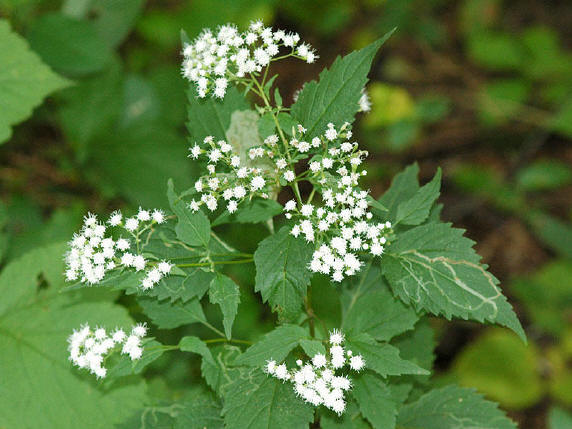|
Beware – Some Plants Are Evil
Patty McDermitt
Adams County Master Gardener
 What I mean when I say, "Some Plants are Evil" is that not all plants have what I would call a good purpose. Some plants kill, poison, invade, intoxicate, create pain, are dangerous to human or pets, or are offensive in
some way. Wicked plants are everywhere in the world and some are well known and others are well-hidden secrets. I hope to address some of these plants to help us better understand the uses of these plants for good or bad and to help you protect your children, your pets, and yourself. What I mean when I say, "Some Plants are Evil" is that not all plants have what I would call a good purpose. Some plants kill, poison, invade, intoxicate, create pain, are dangerous to human or pets, or are offensive in
some way. Wicked plants are everywhere in the world and some are well known and others are well-hidden secrets. I hope to address some of these plants to help us better understand the uses of these plants for good or bad and to help you protect your children, your pets, and yourself.
All through history plants have been used as murder weapons, some plants have started wars, inflicted pain, they can explode, they can smell badly, or destroy. There are thousands of plants that are poisonous, painful, invasive, or intoxicating. My purpose with this article is to help the home
gardener and their families stay safe as they garden and play in the indoors and outdoors. Plants poison over 68,000 people yearly, so we do need to be cautious and teach our children not eat any plant material. There is no way I can include all plants that cause problems, but I will attempt to list the most problematic.
We 'll first look at plants that are the most popular and are typically grown indoors. These plants should be kept away from children and pets. This small list contains the name of the plant and what part is
dangerous.
- Amaryllis - Bulbs
- Dieffenbachia – Leaves and Sap
- Easter Lily – Leaves and Bulbs
- Ficus Tree – Sap
- Peace Lily - Sap
- Philodendron – Leaves and Sap
- Poinsettia – Sap (Mildly irritating to the skin)
- Schefflera – Leaves and Sap
A good rule of thumb is milky sap of any plant should be treated with respect. It may cause skin irritation. If you are a cat lover remember that all parts of a lily are dangerous to a cat. It can cause kidney failure and death within 24 – 48 hours, if ingested.
There are many outdoor plants to be mindful of and they include the following with the name of the plant and the part of the plant that is dangerous. Please remember this is not a complete list, rather this is a list of common vegetation to be mindful of their toxicity levels. All of the plants
listed below are harmful in some way.
- Azalea/Rhododendron – Leaves, Flower Nectar
- Bleeding Heart – Leaves and Tubers
- Castor Bean – All Parts
- Chrysanthemum/Mums – Flower Heads
- Columbine – Berries
- Daffodil - Bulbs
- Dogwood – Fruits
- Elephant Ears – All parts
- Four 'clock - Roots and seeds
- Foxglove – Flowers/Leaves/Seeds
- Hemlock – All parts
- Holly – Berries
- Hyacinth – Bulbs
- Hydrangea -Flowers
- Ivy (most) – Leaves
- Lantana – All parts
- Lupines – Seeds and Leaves
- Lily of the Valley – All Parts
- Oleander – All Parts
- Poison Oak, Ivy, and Sumac – Oil
- Wisteria – All Parts
Remember plants poison on contact, ingestion, or by absorption or inhalation. Be cautious if you are not sure. There are many look-alikes so be sure you know what plant you are growing or being exposed to.
A good/fun book to read on the subject is "Wicked Plants: The Weed That Killed Lincoln ' Mother", by Amy Stewart. As the title implies, the weed that killed Abraham Lincoln's mother was White Snakeroot or as
they called it in those times Milk Sickness. I found many more interesting stories in this book.

White Snake Root
Take a look at your environment and keep your family and pets safe.
Read other articles on garden design
Read other article by Patty McDermitt |